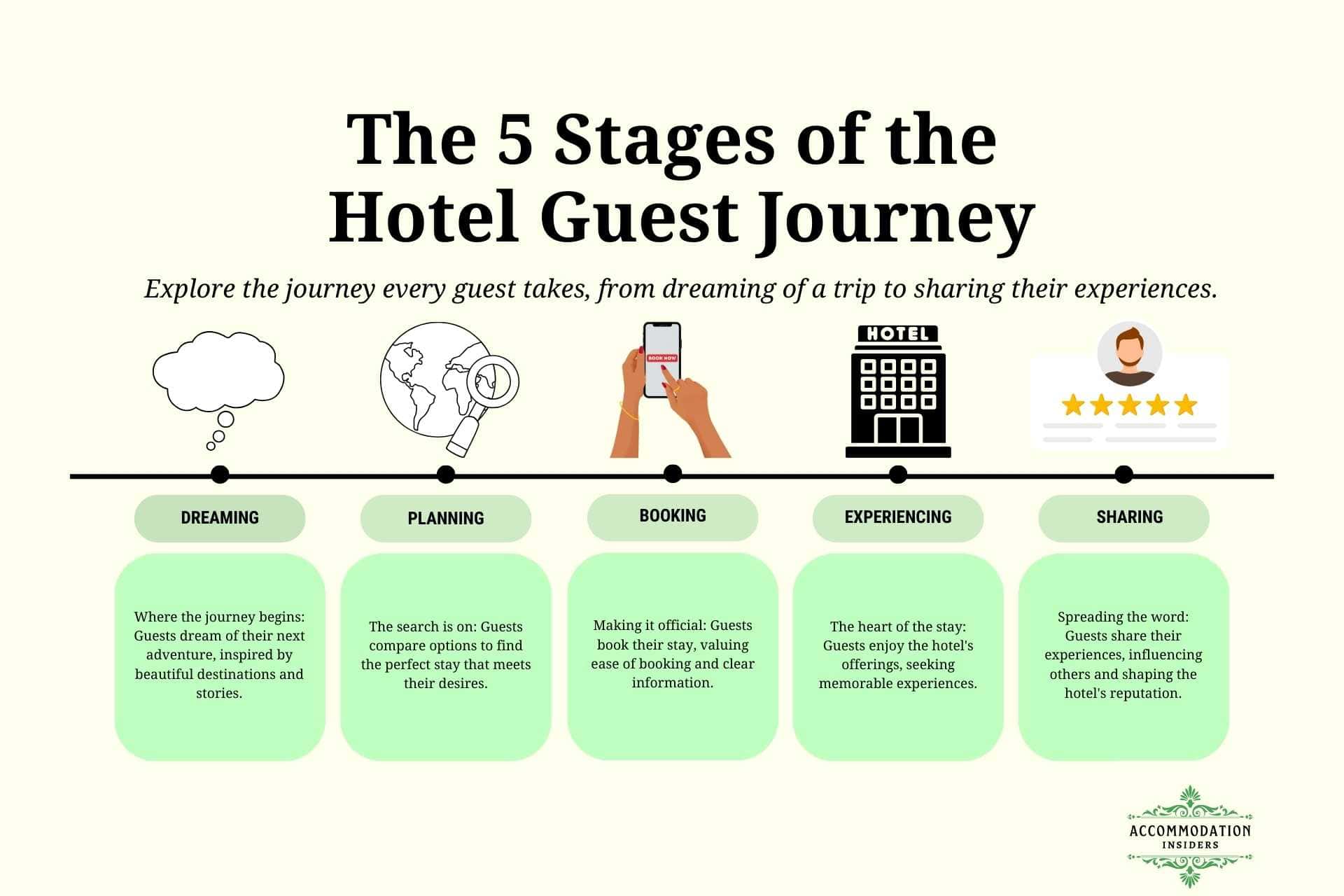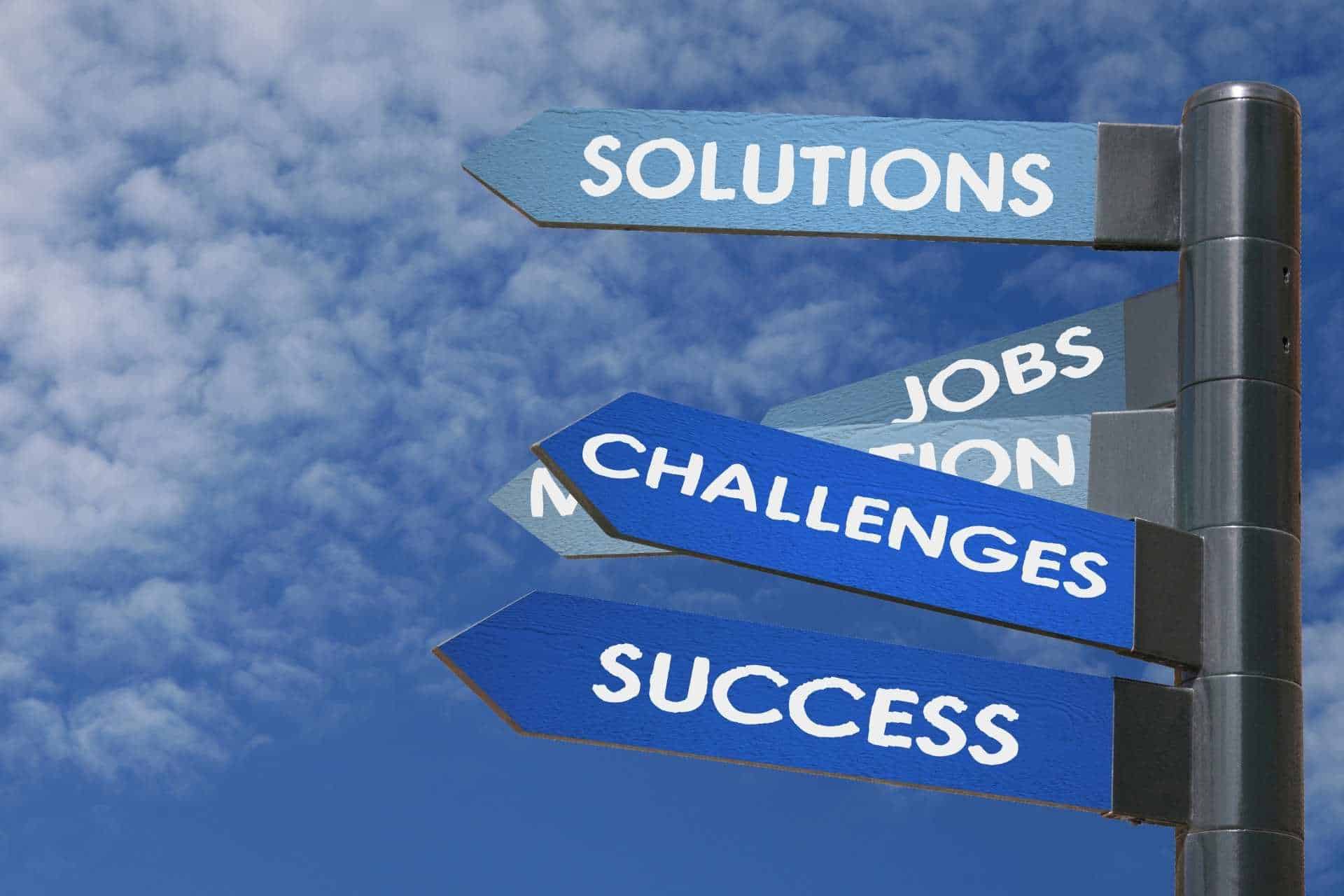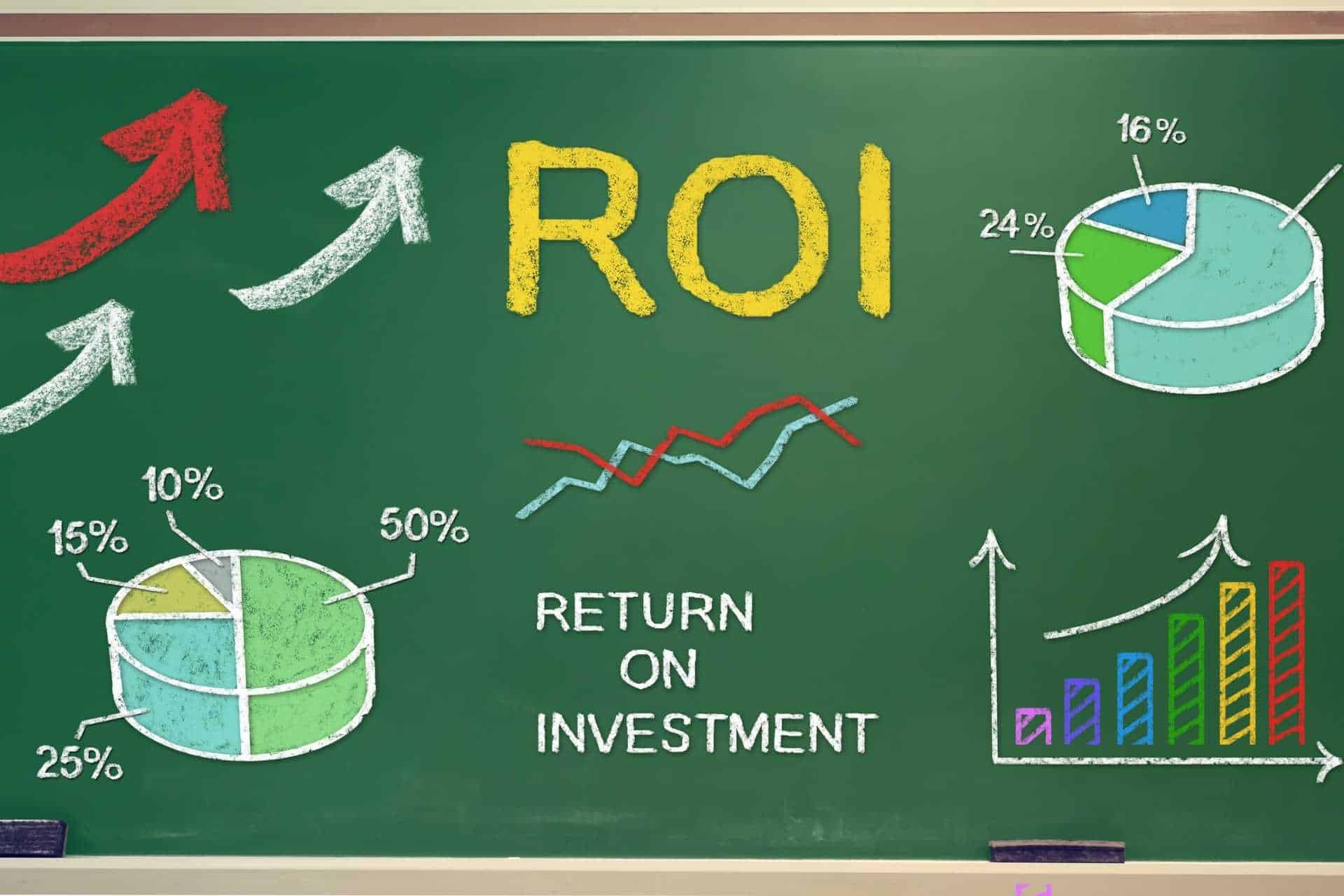Hotel Guest Journey Mapping: Everything You Need To Know
Understanding the hotel guest journey is an essential aspect of providing top-notch service in the hospitality industry. Creating a visual and analytical representation, also known as Hotel Guest Journey Mapping, of this journey enables hoteliers to grasp the various stages that travelers experience, from initial awareness all the way through to post-stay engagement.
This process, known as guest journey mapping, serves as a strategic tool to cater to customers’ needs effectively and ensure they feel their investment in their stay is worthwhile.
In the competitive landscape of hospitality, the focus is always on delivering an exceptional experience. By breaking down the guest’s interaction with the hotel into phases, hotel operators can pinpoint areas of excellence and opportunities for improvement. The mapping covers touchpoints such as the search and booking process, the on-site experience, and the follow-up communication, aiming to optimize each step to achieve customer satisfaction and loyalty.
As someone who’s navigated the hospitality industry’s ups and downs for over three decades, I’ve witnessed firsthand how aligning hotel operations with the guest’s journey can transform service delivery, boost satisfaction, and drive loyalty. Drawing from a rich tapestry of experiences, from my early days of hands-on roles in family-owned hotels to operating my own hotel, I’ll share insights that demystify guest journey mapping and illustrate its impact on your business.
Join me as we explore practical steps to map out your guests’ journey, identify their needs and expectations at each stage, and implement changes in your business that make a real difference.
1. Understanding Guest Journey Mapping
In the hotel industry, Guest Journey Mapping serves as a strategic approach to enhance the guest experience. It is instrumental for hotels aiming to meet and exceed customer expectations.
Defining Guest Journey Mapping
Guest Journey Mapping is the process by which hotels chart out each step a guest takes, from initial research to post-stay engagement. By visualizing the guest’s experience through different stages such as booking a room or checking-in, hoteliers can identify key interactions and moments that shape the guest’s overall perception.
Importance for Hotels
For hotels, understanding and optimizing the Hotel Guest Journey is crucial. It allows them to deliver a personalized and memorable experience, leading to increased guest satisfaction, loyalty, and advocacy. By utilizing a Guest Journey Map, hoteliers can streamline operations and tailor services to meet the specific needs and preferences of their guests.
Key Components
The Guest Journey Map consists of several core elements:
- Touchpoints: All the points of interaction between the guest and the hotel.
- Phases: The stages of the guest’s journey, from awareness to post-stay.
- Emotions: How guests feel at each touchpoint, providing insights into their experience.
- Opportunities: Identified areas for improvement or innovation based on the mapping.
By analyzing these components, hoteliers can make data-driven decisions to enhance the guest experience from start to finish.

2. Stages of Guest Journey
The guest journey in the hotel industry is often segmented into structured phases, each with its own distinct characteristics and critical touchpoints.
Dreaming Phase
In the Dreaming Phase, potential guests imagine the possibilities for their next trip. It’s a time filled with inspiration, often fueled by stunning images and compelling stories.
Planning Phase
The Planning Phase involves meticulous research and comparison. Guests evaluate different accommodation options, looking for the perfect fit that aligns with their needs and desires.
Booking Phase
During the Booking Phase, a guest makes the decision and takes action to reserve their stay. Ease of booking and clear communication are crucial elements that hotels must ensure.
Experiencing Phase
The Experiencing Phase is where guests immerse themselves in the actual stay, interacting with the hotel’s amenities and services. It’s the core of the hospitality offering, aiming to meet and exceed guest expectations.
Sharing Phase
Finally, the Sharing Phase is where guests reflect on their stay and often share their experiences with others through reviews and social media, impacting the hotel’s reputation and future guest interest.

3. Implementing Guest Journey Mapping
Implementing Guest Journey Mapping requires a structured approach to capturing the detailed movements and experiences of guests. It involves gathering data, creating engaging content, integrating technology, and training staff, all aimed at delivering personalized experiences and continuously enhancing service quality.
Data Collection
It begins by meticulously gathering data through surveys, guest feedback, and online reviews. A CRM system could be instrumental in organizing guest information, including preferences and past interactions.
- Surveys: Collect guests’ input post-stay.
- Feedback: Encourage online reviews and ratings.
- Observations: Note direct experiences and behaviors.
Content Creation
You can also create website content to target each phase of the guest’s journey, from initial awareness to post-departure. This content ranges from informative blog posts about mapping the hotel guest journey from A-Z to enticing marketing emails.
- Awareness: Educational blog posts, social media posts.
- Consideration: Testimonials, marketing emails.
- Decision: Promotional offers.
- Retention: Follow-up emails, loyalty program details.
Technology Integration
You should be integrating technology like booking engines and mobile apps that align with the hotel customer journey map, enhancing the guest’s experience and simplifying processes.
- Booking Engine: For easy reservation management.
- Mobile Apps: Enable direct in-app communication.
Staff Training
Conduct regular staff training sessions to educate employees about the importance of each touchpoint in the hotel guest experience journey mapping. Staff become adept at recognizing guest needs and delivering exceptional service.
- Role Play: Simulations of guest interactions.
- Workshops: Education on guest journey’s importance.
Personalization Approaches
Utilize customer data to tailor experiences and offers, knowing that personalization can make a significant impact on guest satisfaction and loyalty.
- Preferences: Using data to customize room settings.
- Special Occasions: Recognizing birthdays or anniversaries.
Continuous Improvement
Try to establish a culture of continuous improvement, where feedback is actively sought and used to fine-tune the guest experience as described in steps for understanding the guest journey.
- Feedback Loop: Regularly reviewing guest comments.
- KPI Monitoring: Tracking performance against goals.

4. Challenges and Solutions
As hotels strive to enhance guest experiences, they face distinct hurdles in crafting an accurate and functional Guest Journey Map. Identifying these challenges and implementing effective solutions is paramount for a successful outcome.
Data Collection Issues
The process of gathering sufficient and accurate data to map a guest’s journey can be daunting for hotels. Clarity and precision in data are critical, as they enable hoteliers to fully understand guest interactions at every touch point. To combat these issues, hotels should invest in sophisticated data analytics tools. These tools can provide real-time insights, enabling more nuanced adjustments to the guest experience.
Integration with Operations
A common stumbling block is ensuring that the Guest Journey Map integrates seamlessly with day-to-day operations. For successful integration, alignment between the digital mapping strategy and the operational workflow is essential. This often entails adopting Centralized Management Systems, which can synchronize information across various departments, ensuring all team members are on the same page.
Ensuring Staff Buy-in
Staff commitment to the guest journey is pivotal in translating mapping efforts into tangible results. To secure buy-in, management should focus on transparent communication and inclusive training programs. Engaging staff in the process and emphasizing the benefits for guests and employees alike help to foster an environment of shared objectives.
Dealing with Negative Feedback
Responding to and learning from negative feedback is a crucial component of refining the Guest Journey Map. By implementing responsive Feedback Management Systems, hotels can systematically address complaints, turning potentially negative experiences into opportunities for improvement. This approach not only enhances the current guest’s experience but also sharpens the accuracy of the journey map for future guests.

5. Measuring Impact and ROI
After hotels have implemented journey mapping strategies, they should measure the effectiveness of these changes using concrete metrics.
Key Performance Indicators
To quantify the impact of guest journey mapping, hotels consider several Key Performance Indicators (KPIs). These can include occupancy rates, average daily rate (ADR), and revenue per available room (RevPAR). Tracking these figures before and after applying journey mapping techniques gives a clear picture of the financial returns.
Guest Satisfaction Surveys
Guest satisfaction surveys are direct feedback tools that measure the guest’s experience against their expectations. Surveys typically ask for ratings on various aspects of the stay, from check-in efficiency to room comfort, providing quantifiable data that reflects the effectiveness of journey mapping.
Online Reviews and Reputation Management
Monitoring online reviews and managing a hotel’s reputation can offer insights into the guest experience. High ratings and positive reviews can correlate with successful journey-mapping strategies, signaling an increase in guest satisfaction and likelihood of repeat business.

6. Future Trends in Guest Journey Mapping
The hotel industry continually evolves, and the methods for mapping guest journeys are no exception. With technological advancement, hotel guest journey mapping is expected to become more intricate and data-driven. Here are key trends that industry professionals are paying attention to:
- Integration of AI and Machine Learning: Hotels are expected to increasingly utilize AI and machine learning algorithms to personalize the guest experience. By analyzing previous interactions and behaviors, hotels can offer tailored recommendations and services.
- Advanced Predictive Analytics: The use of predictive analytics will aim to foresee guest preferences and potential issues before they arise. This proactive approach can greatly enhance guest satisfaction.
- Virtual Reality Previews: Potential guests might be able to take virtual tours of hotels and their amenities, allowing them to experience their journey before it begins.
- Contactless Technology: Enhanced by the pandemic, the trend for contactless interactions continues, with mobile check-in/out and digital concierge services growing in popularity.
- Sustainability Tracking: Guests are increasingly environmentally conscious. In response, some hotels may begin to map and showcase the sustainability aspects of a guest’s stay, from energy use to food consumption patterns.
- Internet of Things (IoT): The IoT will play a larger role in personalizing room settings to individual guest preferences, from temperature control to entertainment systems, all adjusted before the guest even steps into the room.
By leveraging these technologies, hotels aim to deliver seamless and highly personalized experiences that meet or exceed modern traveler expectations.

Wrapping Up: Hotel Guest Journey Mapping
We’ve talked a lot about how to make a map that shows what guests do and like from the start to the end of their stay at your hotel. This map helps you make their visit really special, so they’ll want to come back and tell their friends about it.
If making this map sounds hard, or if you’re not sure how to start, I’m here to help you. I know a lot about hotels and how to make guests happy. If you want me to help you make a map for your hotel, check out my services page and see how we can work together.
Let’s work together to make your hotel a place guests love to remember!
Related Posts:
